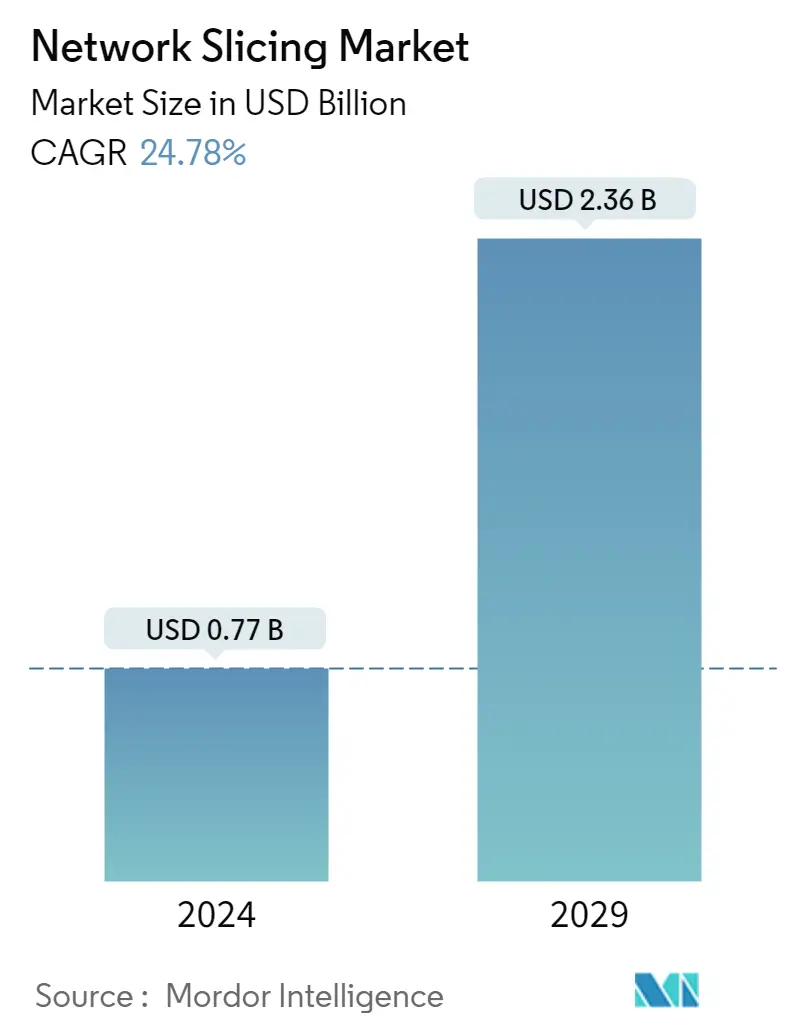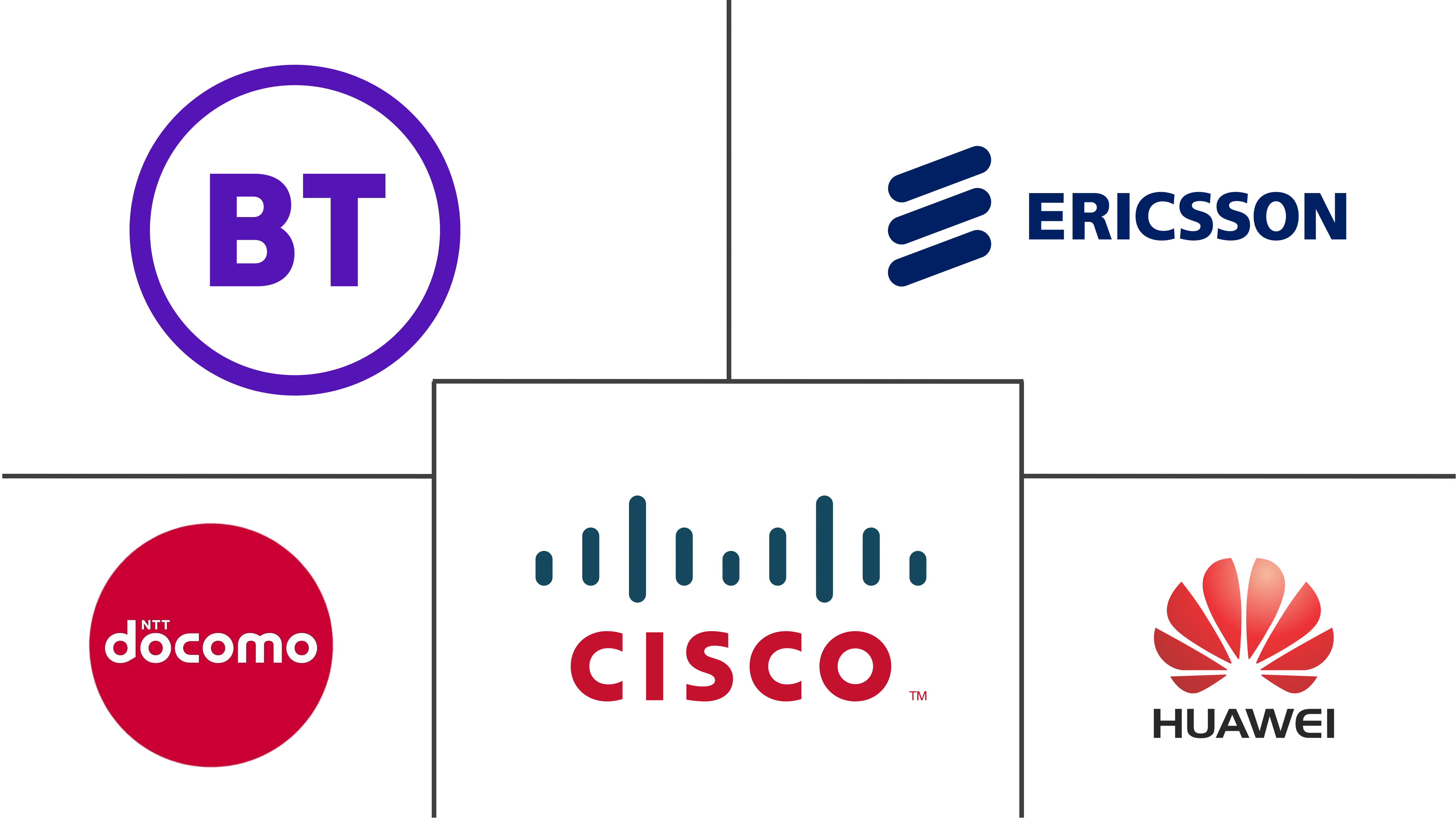Market Size of Network Slicing Industry

| Study Period | 2019 - 2029 |
| Market Size (2024) | USD 0.77 Billion |
| Market Size (2029) | USD 2.36 Billion |
| CAGR (2024 - 2029) | 24.78 % |
| Fastest Growing Market | Asia Pacific |
| Largest Market | North America |
Major Players
*Disclaimer: Major Players sorted in no particular order |
Need a report that reflects how COVID-19 has impacted this market and its growth?
Network Slicing Market Analysis
The Network Slicing Market size is estimated at USD 0.77 billion in 2024, and is expected to reach USD 2.36 billion by 2029, growing at a CAGR of 24.78% during the forecast period (2024-2029).
According to GSMA, network slicing, in combination with other enablers and capabilities, will aid operators in addressing a revenue opportunity worth USD 300 billion by 2025.
- 5G networks, in combination with network slicing, allow business customers to enjoy connectivity and data processing that are tailored to the specific business requirements and adhere to a Service Level Agreement (SLA) as agreed with the mobile operator. Customizable network capabilities include data speed, latency, quality, security, and services. Thus as the demand for high-speed network coverage is progressing, it will open new avenues for the market.
- However, 5G is struggling to keep pace in emerging economies due to low bandwidth and a lack of infrastructure. For instance, India's smart city initiative launched two years ago has struggled to make significant progress. Beyond the numerous local regulatory and structural challenges, there needs to be more spectrum or even the right spectrum bands available for the smart city vision to be realized.
- Various industries are being transformed by the widespread use of IoT and ongoing improvements in Machine-to-Machine (M2M) communication networks, which are connecting all different kinds of equipment, systems, and services. One of the many use cases that network slicing-enabled 5G will allow is the Internet of Things, which would provide communication between a significant number of sensors and linked devices. High-power, low-latency applications (such as mobile video surveillance) and low-power, low-latency, long-range IoT applications are two categories of IoT application requirements (smart cities and smart factories). To meet these needs for growing IoT applications, which are characterized as huge machine-type communication and mission-critical applications, the evolution of 5G Technology is anticipated to pick up speed.
- However, Network slicing security, which may cause significant losses for enterprises and service providers, is a major worry for CIOs. SDN, NFV, and cloud-native architecture have all been used to construct the new network infrastructure. Network functions are spread across local, regional, and central data centers and are decoupled from supporting infrastructure. The vast majority of network services in a 5G network based on the cloud are implemented through public and private cloud infrastructure.
- With the aid of expanding mobile networking and remote access services in a number of industries, including retail, telecom, IT, and healthcare, the pandemic has considerably driven demand for broadband services. Additionally, as businesses all around the world have begun to reopen, communications service providers are refocusing on 5G rollouts and stepping up their network-slicing efforts. Additionally, COVID-19 has increased interest in 5G use cases, including robotics, telemedicine, remote education, and remote offices, all contributing to the network-slicing market.
